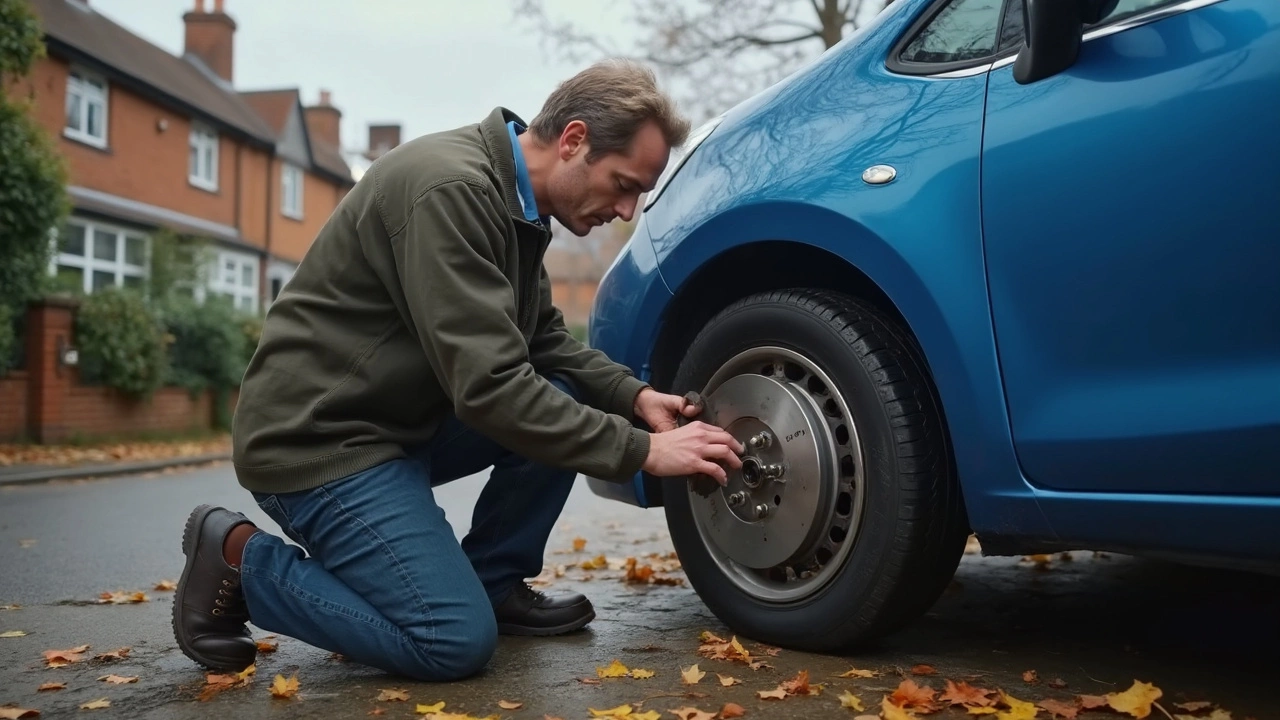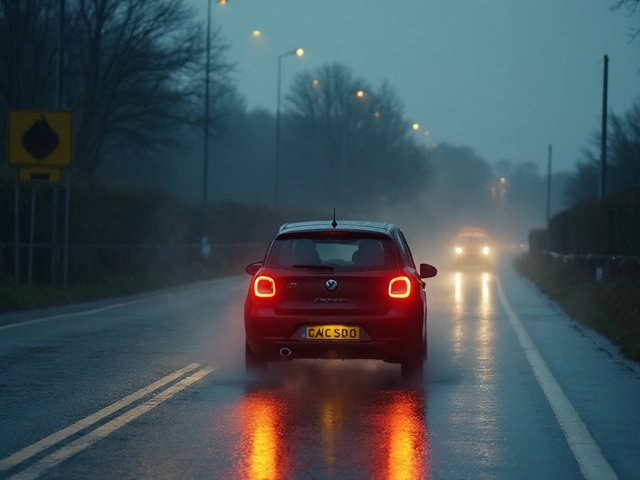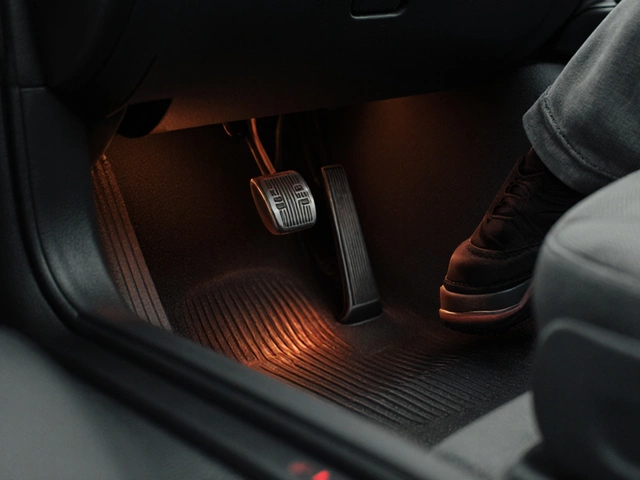Ever pressed the brake and felt a weird pulsing through your foot? Or maybe you’ve noticed an unsettling grinding sound that isn't going away. These could be your car’s way of saying, “Hey, give my rotors a look!” Lots of folks get brake pads replaced but totally forget about the rotors—the big metal discs your pads squeeze to slow down. That’s a pretty risky oversight.
Here’s the thing: bad rotors aren’t just annoying—they mess with your stopping power. And if you let them get worse, your drive turns from safe to sketchy real quick. Rust, grooves, or warping can make your car shake when you brake, or the steering wheel might start to wobble. Even the brakes might feel weaker than usual. Spotting early signs takes just a few minutes and could save you a load of trouble (and money) later. Let’s break down what you should watch for, and what to do if your rotors are on their way out.
- Classic Warning Signs You Need New Rotors
- How Worn Rotors Affect Your Brakes
- Easy At-Home Checks You Can Do
- When to Replace Both Rotors and Pads
- Tips to Make Your Rotors Last Longer
Classic Warning Signs You Need New Rotors
Think something's off with your brakes? Your car actually gives out some clear signals when your rotors are done for. Let’s break down what to keep an eye (or ear) out for—these aren’t just random problems, but common signs mechanics see every day.
- Vibration or Pulsing: If you feel shaking through the brake pedal when you slow down—especially from highway speeds—your rotors might be warped. This isn’t just annoying. It can mess with your overall stopping power.
- Grinding or Squealing: Loud scraping, grinding, or squealing noises when you brake are never a good thing. If you just put on new brake pads and still hear this, your rotors are probably worn or have deep grooves.
- Visible Scoring or Grooves: Take a peek through the wheel openings. Rotors with deep lines, cracks, or rust patches need attention. Smooth rotors are good, but anything that looks like grooves in a record is bad news.
- Longer Stopping Distances: Maybe you’ve noticed your car takes more room to stop than it used to. As rotors wear down, they don’t grip as evenly, so your car gets sluggish to respond.
- Brake Warning Light: If your dash lights up, especially the brake system indicator, check your pads first. But if they’re fine, bad rotors could be the reason.
According to data from the National Highway Traffic Safety Administration, more than 22% of all brake-related issues reported in 2024 involved rotor problems. Here’s a quick look at some telltale symptoms and how often mechanics see them:
| Rotors Symptom | Percent of Brake Service Visits |
|---|---|
| Pulsing/Vibration | 45% |
| Grinding Noise | 36% |
| Visible Grooves/Scoring | 32% |
| Brake Light On | 17% |
Spot one or more of these signs? Don’t ignore it. Waiting too long turns a simple rotor swap into a much bigger repair job. If you catch it early, you might just need to replace the new rotors and pads, not the whole system.
How Worn Rotors Affect Your Brakes
The condition of your rotors has a huge impact on how your brakes work. When rotors wear down—or get uneven from heat, rust, or hard stops—you’ll notice changes right away. One of the first signs is a longer stopping distance. Basically, your brakes just don’t grab like they should. This gets dangerous fast if you need to stop in a hurry.
Let’s get into specifics. A warped or grooved rotor can make your car shake or vibrate when you press the pedal. Drivers often think their alignment is off, but it’s usually their rotors. If you hear a grinding or high-pitched squeal, the rotor surface might be uneven, or the brake pad is wearing straight through. That’s your cue to check things out before it hits your wallet even harder.
Here’s what happens when your rotors are in bad shape:
- Brake rotors with deep grooves can eat brake pads way faster, so you’ll be replacing pads more often than you should.
- Heat from repeated braking can actually warp rotors, especially in city driving or mountainous areas. Warped rotors don’t make full contact, so stopping power drops a lot.
- Rusty or thin rotors aren’t just noisy—they can crack under pressure. That’s a safety nightmare waiting to happen.
Some shops use a micrometer to measure the thickness of the rotor. A new rotor often starts at about 1.1 inches thick, but most car makers recommend replacing them when they’re under 1 inch. Below is a quick breakdown of what happens as rotors get worse:
| Rotor Condition | Brake Performance | Possible Issues |
|---|---|---|
| New | Quick, even | None |
| Slightly Worn | Still good, may feel less crisp | Minor squeaking |
| Heavily Grooved | Sluggish, uneven | Vibration, pad wear |
| Warped/Thin | Weak, unpredictable | Steering shake, noise, safety risk |
If your car is acting up every time you brake—shaking, squealing, or taking forever to stop—chances are your rotors aren’t doing their job. Dealing with it early keeps you safe, keeps repair costs low, and will stop your brake pads from wearing out way too soon.
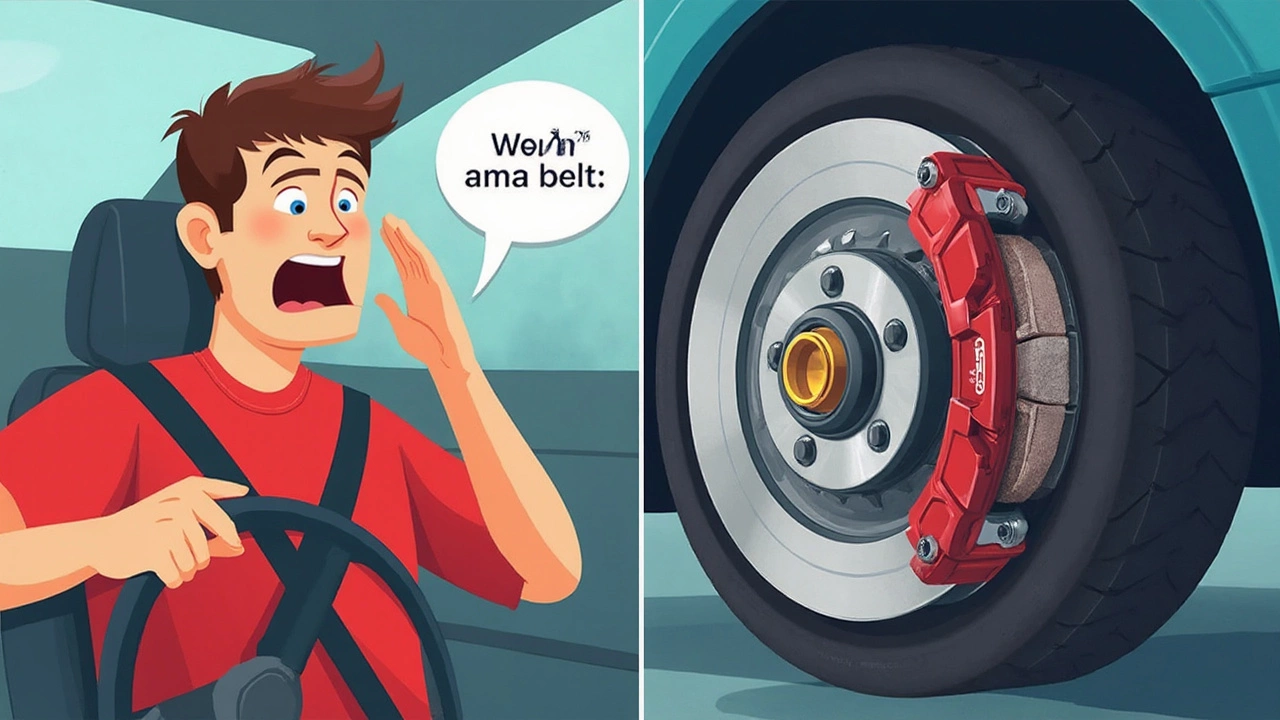
Easy At-Home Checks You Can Do
Not ready to run to the shop just yet? No worries. You can do a few quick checks in your own driveway to figure out if your rotors are shot. Don’t worry, you won’t need any fancy tools—maybe just a flashlight, a jack, and your eyes. Catching rotor problems early can keep things cheap and hassle-free.
- Listen closely: Start with a test drive. Roll down your window and tap the brakes. Any grinding, squealing, or scraping isn’t normal. The worst sound? Metal on metal. That means your pads or rotors are way past due for attention.
- Steering wheel shake: If your steering wheel wobbles when you slow down, it’s a big hint that your rotors might be warped. This usually shows up most at higher speeds—think about 50 mph and above when you brake hard.
- Visual check: If your wheels have big openings, shine a flashlight through and look at the disc (rotor) behind the wheel. You might see grooves, deep rust, or blue spots from heat. All of these are signs your rotors are getting cooked.
- Feel the brakes: Soft or spongy brakes could mean your pads are thin or your rotors are worn down. If you feel any kind of pulsing or vibrating through the pedal, that’s usually not normal—and it almost always points to rotor trouble.
If you want to get hands-on, try this:
- Park safely, set the parking brake, and jack up one side of your car.
- Take off the wheel and look at the rotor closely. If you see major grooves (like a record) or the edge feels like a lip, your rotor’s worn. Minor surface rust is fine, but big patches or flaky bits are not.
- Spin the rotor with your hand. It should move easily and not make scraping noises. Stuck or noisy = trouble.
Tons of drivers skip these checks, which is wild considering new rotors can cost less than $60 apiece for most cars. Here’s a quick reference table to help you spot issues:
| Check | What to Look/Sound For | What It Means |
|---|---|---|
| Brake noise | Grinding or squealing | Worn rotors or pads |
| Steering wheel shake | Vibrates when braking | Rotor warping |
| Surface grooves | Deep lines on rotor | Rotor surface damage |
| Discoloration | Blue spots or heavy rust | Overheating or corrosion |
If any of this looks or feels off, it’s time to swap out those rotors before things get ugly on the road.
When to Replace Both Rotors and Pads
If you swap out worn brake pads but ignore rough or damaged rotors, you’re basically sticking a band-aid on a bigger problem. Here’s a wild stat: most mechanics say pads and rotors should both be replaced about 70% of the time together during regular service. That’s because new pads need a clean, smooth rotor surface to grip—otherwise, your stopping gets sketchy, fast.
Sometimes, the surface of the rotor can get too thin or grooved after a couple round of new pads. Most rotors start at 28-30mm thick (depends on your car), and once they drop below the 'minimum thickness' (which is stamped right on the rotor), they're done for—no exceptions.
| Red Flag | What You’ll Notice |
|---|---|
| Deep Grooves or Scoring | Visible lines, rough noises when braking |
| Warped Rotors | Vibration in steering wheel or brake pedal |
| Rotors Below Minimum Thickness | Dealer or shop will measure with a micrometer |
| Blue Spots or Heat Damage | Spots of discoloration or burnt metal smell |
| Hardened Rust, Not Surface Dust | Pitting and flaking that does not rub off |
So, when should you swap both at the same time? Here’s the deal:
- If a mechanic tells you the rotors are below the minimum thickness.
- When brake pads have worn down and caused grooves or ridges on the rotors.
- If you hear grinding when braking—often means both are toast.
- After 50,000–70,000 miles on the same rotors with multiple pad replacements.
- If you notice weird pulsing, shaking, or loss of brake power.
You should replace new rotors and pads as a pair to get that smooth, safe stop you expect. Doing both at once helps your braking system last longer. Plus, you’ll avoid that annoying squeal or shudder that comes from mismatched old and new parts. Trust me, once you feel the difference, you’ll never go back to just swapping pads alone.
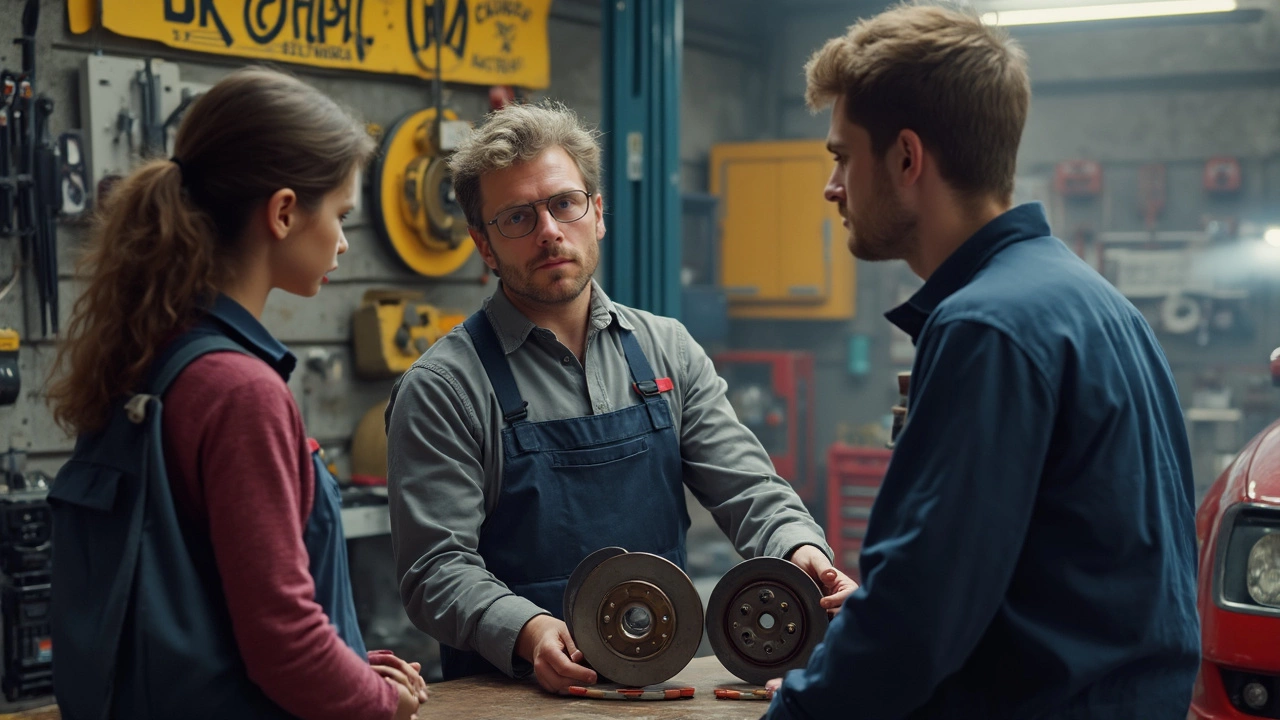
Tips to Make Your Rotors Last Longer
Want to make your rotors go the extra mile? The good news is, you don’t need to be a mechanic to stretch their lifespan. Small changes in how you drive and take care of your brakes make a big difference. Here’s what actually works:
- Brake gently, not hard and fast. Slamming on the brakes heats up your rotors, which can warp them over time. Try to slow down gradually instead of hitting the pedal last second.
- Don’t ride your brakes downhill. If you’re always tapping the brakes on a long slope, the heat builds up and wears out both your pads and rotors. Instead, shift to a lower gear if possible and let your engine help slow you down.
- Keep up with brake pad maintenance. Worn-out brake pads are rough on rotors. Replace pads when they’re getting thin, so metal doesn’t grind on the rotors and chew them up.
- Flush brake fluid as recommended. Old, dirty brake fluid can mess with your braking system, leading to uneven wear. Check your car manual for how often to do this—usually every 2 years.
- Watch your rotors’ surface. If you notice deep grooves, rust spots, or discoloration, get them checked before things get worse. Early fixes are almost always cheaper.
How you use your brakes really shows in how long your brake rotors last. For most folks, rotors usually last between 30,000 and 70,000 miles, depending on driving habits and city vs. highway driving. Short trips with lots of stopping can wear them out way faster than cruising on the highway.
| Habit | Rotor Life Impact |
|---|---|
| Gentle braking | Up to 70,000 miles |
| Frequent hard stops | As low as 30,000 miles |
| Replace pads before worn out | Fewer rotor replacements needed |
| Ignore fluid changes | More risk of uneven wear and corrosion |
One quick tip—don’t trust silence. Just because your brakes aren’t making noise doesn’t mean your rotors are fine. A quick brake check at every oil change is an easy way to stay ahead of problems.
